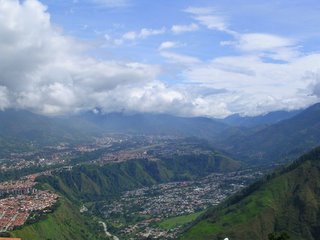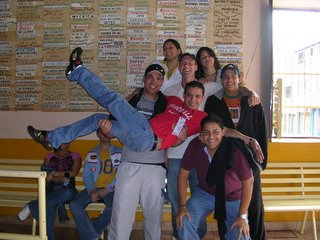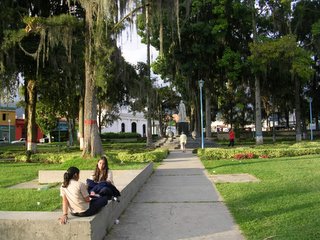Super Tourist!
I just returned to Caracas from what seemed like a two-week long nature documentary…. The beauty of the Caribbean, Los Andes and Los Llanos was so rich that almost every moment felt like a page from National Geographic or a scene from the “travelogues” my mom used to take me to see at Calvin College.
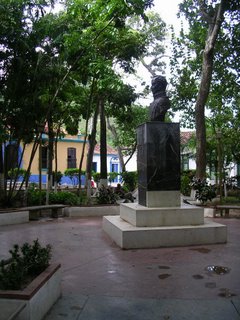 Plaza Bolivar in the quite and historic village of Choroni
Plaza Bolivar in the quite and historic village of ChoroniThe trip began with another weekend in Chorni: my third trip this year to this idyllic historic pueblo, with 500 year old plaza, iglesia, and narrow streets in the middle of a national park forest, two kilometers from the beach.
From there I took an overnight bus from Maracay to Merida, the coldest bus ever. I woke up in The Andes. Although most of my time in and around Merida was rainy and cold, I loved being the mountains. Merida was different from any city I’ve seen in Venezuela, not only because of the temperature, but the overall climate was very relaxed. There is a large student population, very little crime, and more foreign tourist than I have seen anywhere in Venezuela.
 The road (if you can call it that!) to Los Nevados
The road (if you can call it that!) to Los NevadosAfter a couple days of wandering around the city, I took a four-hour jeep ride, often on cliff-hanging roads, to the small mountain village of Los Nevados. This village has only had electricity for about 15 years and still feels like it is in a different century. The rain and cold kept me inside, sometimes under four layers of blankets, even during the day, for two days. (I ready 240 pages of a novel in just one day!) But finally the weather broke and I was able to take the five-hour walk I had planned on an Andean trail from the pueblo to a station of the telefericó, the highest cable car in the world. Each step of the hike was beautiful, and although the day was generally overcast, occasionally the clouds would break for a moment and treat me to spectacular views.
 The Village of Los Nevados
The Village of Los NevadosBack in Merida, I signed up for a tour… the only tour I have ever taken as a participant rather than a guide. It was a good decision, since the guide took us to places that would have not been likely discovered solo. Although only a half day’s drive, the contrast between the Andes and the pancake-flat and hot Los Llanos was absolute.
 Piranha fishing!
Piranha fishing! Our group of eight slept in hammocks in a thatch roofed shelter at a rustic “Hato”, the Llanero name for a ranch. Each day included several adventures. I wrestled an anaconda out of a swamp; caught piranha (and then swam in the same river); viewed dozens of bird species, from eagles to macaws; saw toninas (fresh water dolphins), crocodiles, anteater, and iguana. I’ve got some great pictures from the trip here (in the "Los Llanos" file). For more about Los Llanos, check out this website

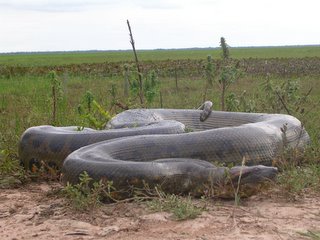 Catching (and later releasing) an anaconda!
Catching (and later releasing) an anaconda!If you go to Venezuela and are looking for a tour company to get you into the outback or mountaintops, I recommend Gravity Tours, who ran the trip I went on.

